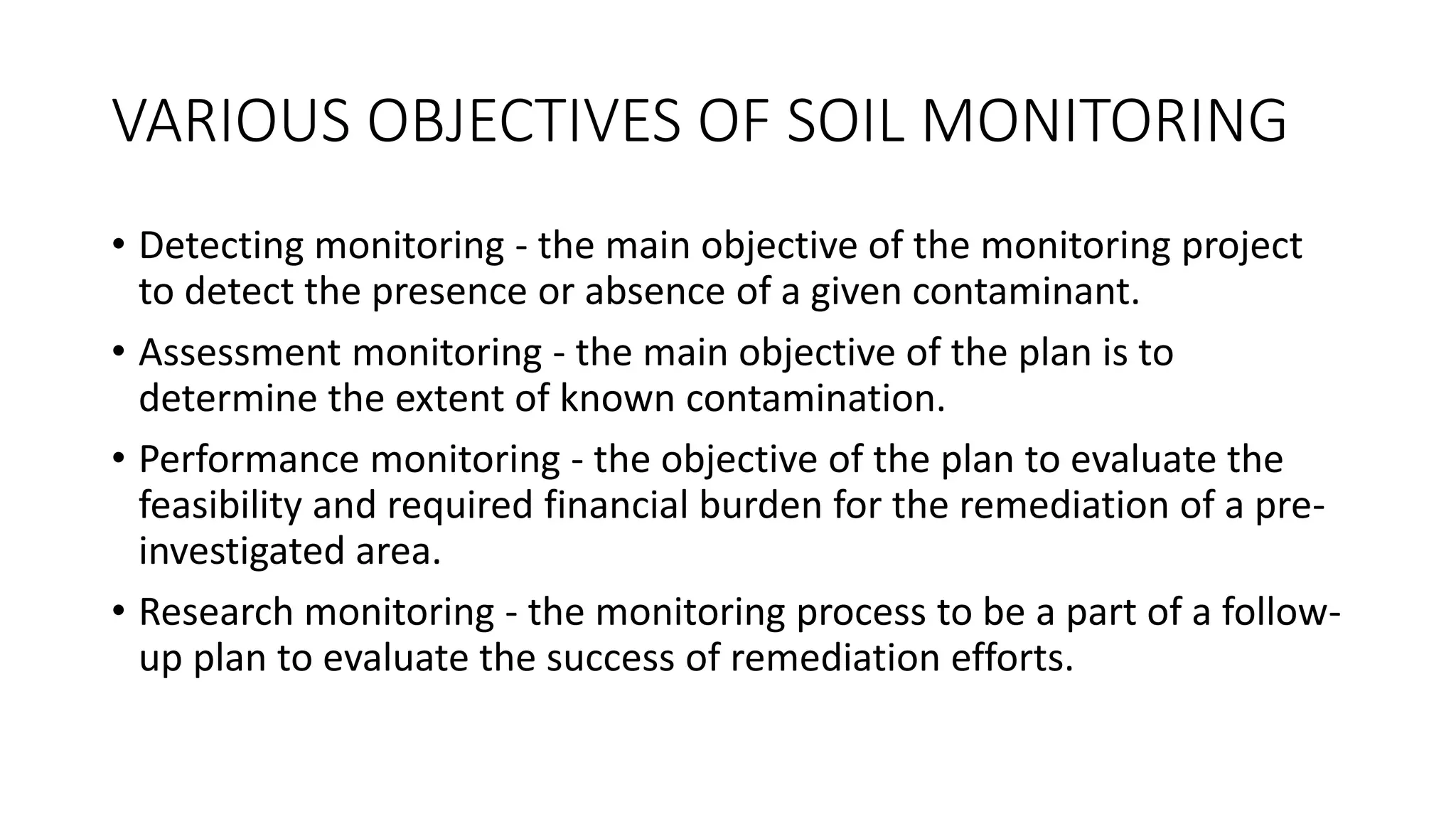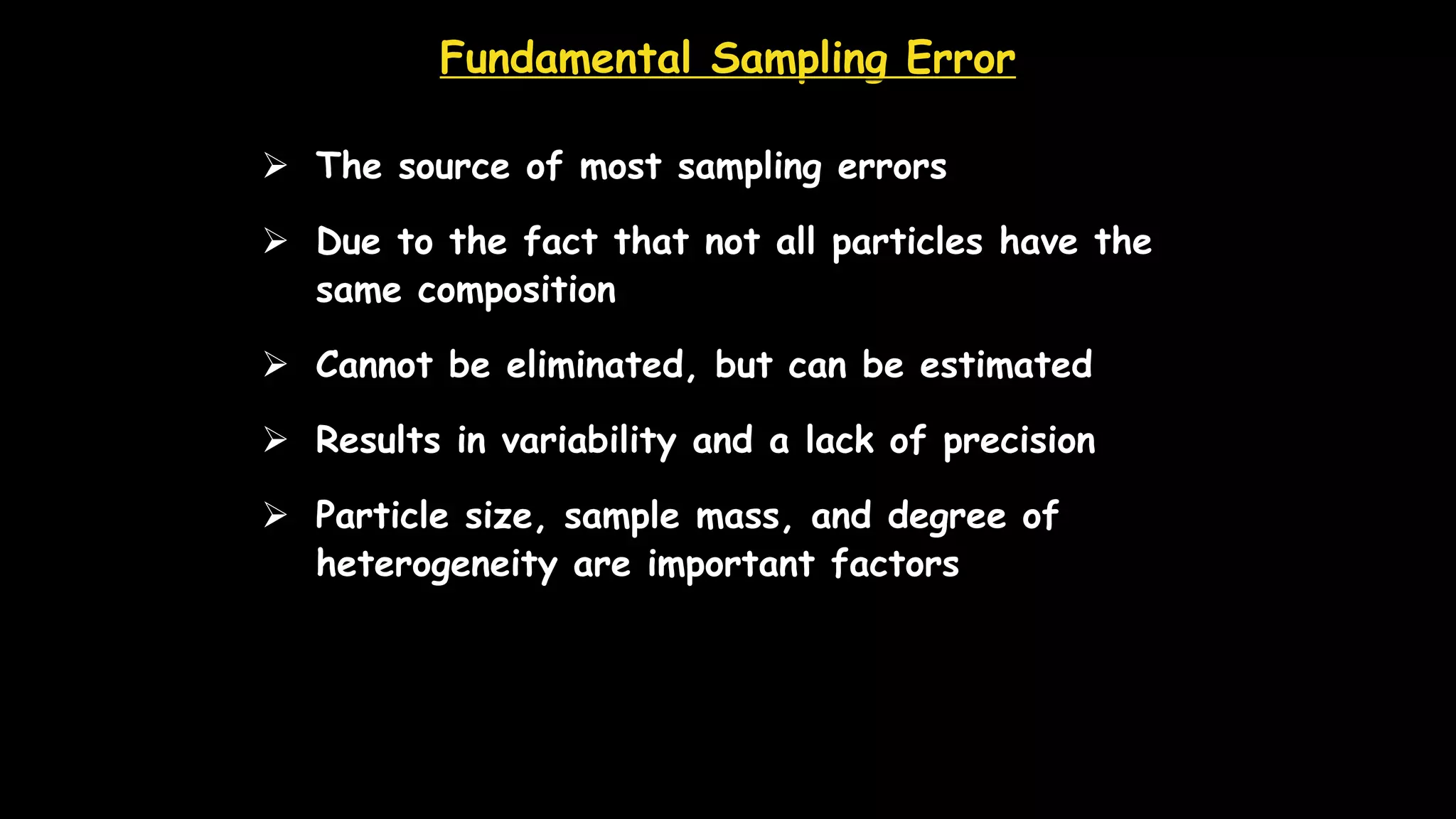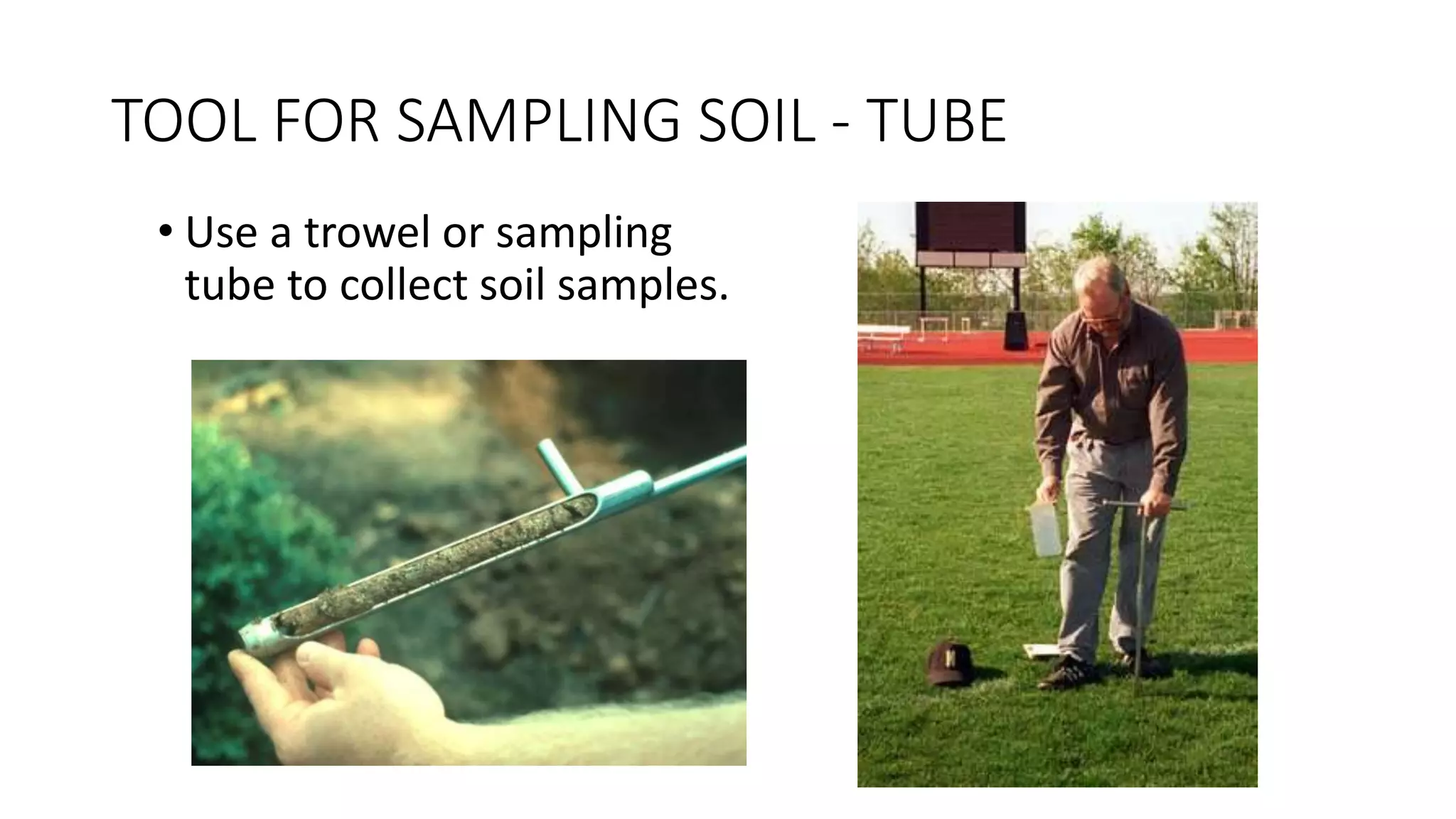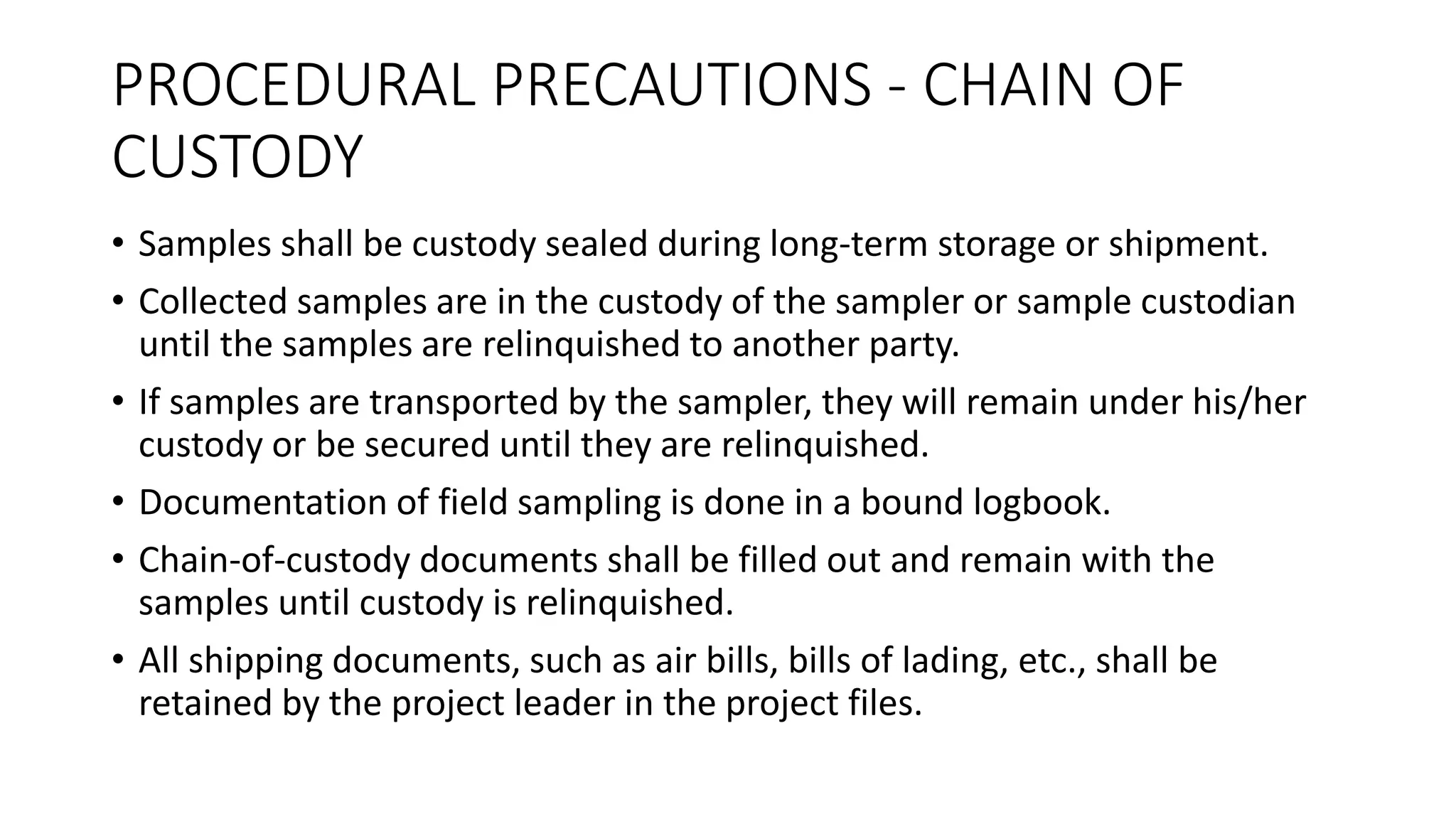This document provides information about soil and sediment sampling. It discusses basic principles of soil sampling including objectives of soil monitoring and parts of a monitoring plan. It covers site characterization, selection of sampling approach and factors that affect sample reliability. The document also addresses selection of area, sampling point, parameters and equipment for sampling. Finally, it discusses guidelines for handling and storage of soil samples including preservation techniques, as well as pre-treatment and extraction of contaminants from soil.












![Sampling for Soil Horizon
Smith, D.B., Solano, Federico, Woodruff, L.G., Cannon, W.F., and Ellefsen, K.J., 2019,
Geochemical and mineralogical maps, with interpretation, for soils of the conterminous United
States: U.S. Geological Survey Scientific Investigations Report 2017-
5118, https://doi.org/10.3133/sir20175118. [https://pubs.usgs.gov/sir/2017/5118/]](https://image.slidesharecdn.com/4-221117092800-9ca2d75f/75/4-0-SOIL-SAMPLING-pptx-13-2048.jpg)




























